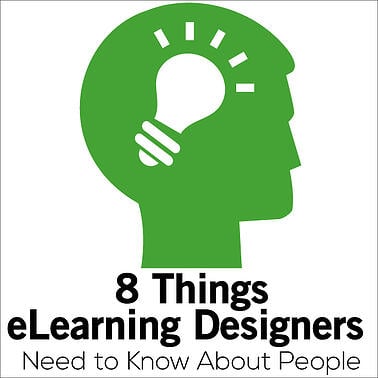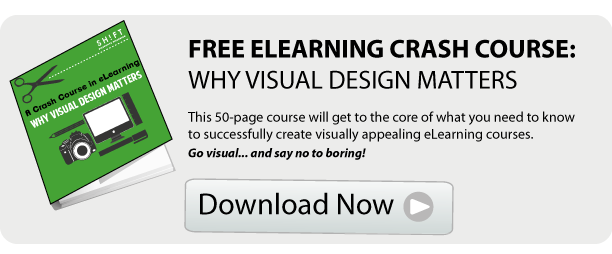The art and science of design acknowledges the habits and actions of people. Effective images, video and text take into account the reasons people do what they do to ensure the viewer gets the right information and takes and takes away the right message.
 Effective eLearning design also must incorporate this foundation of good design. Our courses have to acknowledge the habits and tendencies of the people interacting with the course so the learning becomes relevant, lasting and useful to the learner.
Effective eLearning design also must incorporate this foundation of good design. Our courses have to acknowledge the habits and tendencies of the people interacting with the course so the learning becomes relevant, lasting and useful to the learner.
The groundbreaking book, "100 Things Every Designer Needs to Know About People" by Susan Weinschenk, delves into the reasons people make decisions and shows how design can tap into the psychology of the learner to change outcomes. The book makes a great read, but in this post, we pulled out the top eight habits of people that most apply to eLearning. Increasing awareness of why learners act in certain ways can increase the effectiveness of your eLearning courses.
Principle 1: People like people.
People especially like and respond to people they know, think they know or who looks like someone they know. Incorporating images, graphics, messages from leaders, or animations that reflect your learner profile can help make the learning more engaging and effective.
Principle 2: People like stories.
You can supply data in droves, but effective eLearning design should also draw upon stories to illustrate the data to drive the point home. Learners can misinterpret data, whereas stories present information more clearly, create an emotional response, and trigger the brain's memory center to make the learning more effective.
Principle 3: Use it or lose it.
Our entire lives, our brains prune out information it doesn't need or use to make room for other, more relevant information. Effective eLearning design takes this into account and provides learners the opportunity to use new information so that it sticks. This means repeating the information, applying it immediately, or connecting the new information to existing knowledge.
Principle 4: People judge books by their covers.
Despite our best intentions, we make split second judgements and decisions based on how something looks and feels. Your eLearning courses have one chance to make a solid first impression with learners to gain their trust. This means the look and feel of your courses must present it's best foot forward.
Font, images, colors, layout and navigation have to draw learners in, not turn them off.
Principle 5: People like organization.
You have designed a pretty great eLearning course, but the results show the course isn't effective. Why? Likely because what you see on the screen isn't what makes it into the learner's brain. You can help learners take away the right information by organizing and managing the information more effectively, which in turn, reduces the likelihood the learner will get lost in her own perceptions of the information.
Principle 6: People like surprises.
Surprises are fun, different and exciting. They offer us a new way to interact with the world and view a situation. Effective eLearning design should incorporate new and novel ways of looking at information the learner may have encountered repeatedly. The element of surprise will help the information stick. As a caution, people also like consistency so balance out the new with the expected for the most effective design.
Principle 7: People filter information.
We can't retain all the information we take in each day, and the brain's ability to filter works to protect us from information overload. To prevent learners from filtering out the important information in eLearning, make the key learning targets impossible to ignore. Increasing the size, changing the color or adding animation can draw the learner's attention to the learning targets.
Principle 8: People like to succeed.
It feels good to achieve something. Effective eLearning design should provide feedback to learners regularly about their progress, what they have mastered, and if they have met certain goals. Providing this information will motivate learners as they progress through the course.
Creating a meaningful eLearning experience implies understanding people first and then getting that understanding into design. This practice will lead to more successful eLearning courses for sure.




